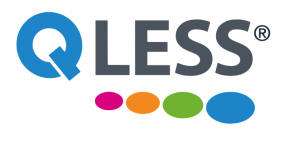Waiting in line is something we’ve been conditioned to do — from coffee shops to amusement parks and at government offices with ticket numbers in hand.
But then COVID-19 hit. Suddenly, we went from packed buildings to strict capacity restrictions, from barrierless service desks to plexiglass shields, from in-person services to virtual alternatives.
“Safety is a concern,” said Zach Zipay, Sales Director for Government Services at QLess, which specializes in electronic queue management. “As organizations consider how to strike the right balance between virtual and in-person services, the concern is how they can do that safely for employees and customers.”
Rather than having people wait in a physical line for services, agencies need to allow customers to “get in line” from anywhere and arrive for their appointment when notified via SMS. They should also have options for virtual callback queues and flex-appointment scheduling that includes reminder texts.
These are options we’ve come to expect in our personal lives, but cities and counties are increasingly tapping into these capabilities, Zipay said. San Francisco, Orlando and Nashville are among them.
“QLess is no longer a luxury; it is a necessity if essential operations are to safely continue, while also dealing with cuts and changes of budget cycles,” he said.
Zipay shared key considerations as agencies prioritize safety, cost-effectiveness and customer experience in today’s environment.
1. Low barrier to entry
Agencies should not have to sacrifice quality for cost, and Orange County, Florida, is a prime example. Jim Cochrane, Chief Information Officer at the county’s Tax Collector Office, shared that in his quest to find a complete solution that would integrate all aspects of the process for serving residents, most of what he found did not measure up.
“The solution was too expensive, didn’t perform very well or lacked the functionality we wanted,” he said. “Then we learned about the experience of municipalities around the country with QLess.”
The system worked so well that the county rolled QLess out to all seven offices.
2. Future-proofing
QLess customers were able to minimize the shock and stress of moving from in-person to virtual offerings because they invested in a dynamic solution before the pandemic.
“They had the infrastructure in place to still see and serve citizens, regardless of being remote or in person,” Zipay said. 3.
3. Cloud-based
Four to five years ago, callback queues were not synonymous with local governments. But that is changing thanks to the cloud. Cloud allows agencies to pivot, embrace web-based options and easily integrate them with existing systems.
“There is always an option to give better customer service in any arena, whether it is virtualized or in person,” Zipay said. “There is always an option, and we have different modules for every jurisdiction — small or large.”
This article is an excerpt from GovLoop’s recent guide, “Resilience Lessons From State & Local Government.” Download the full guide here.






Leave a Reply
You must be logged in to post a comment.